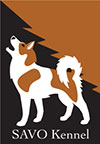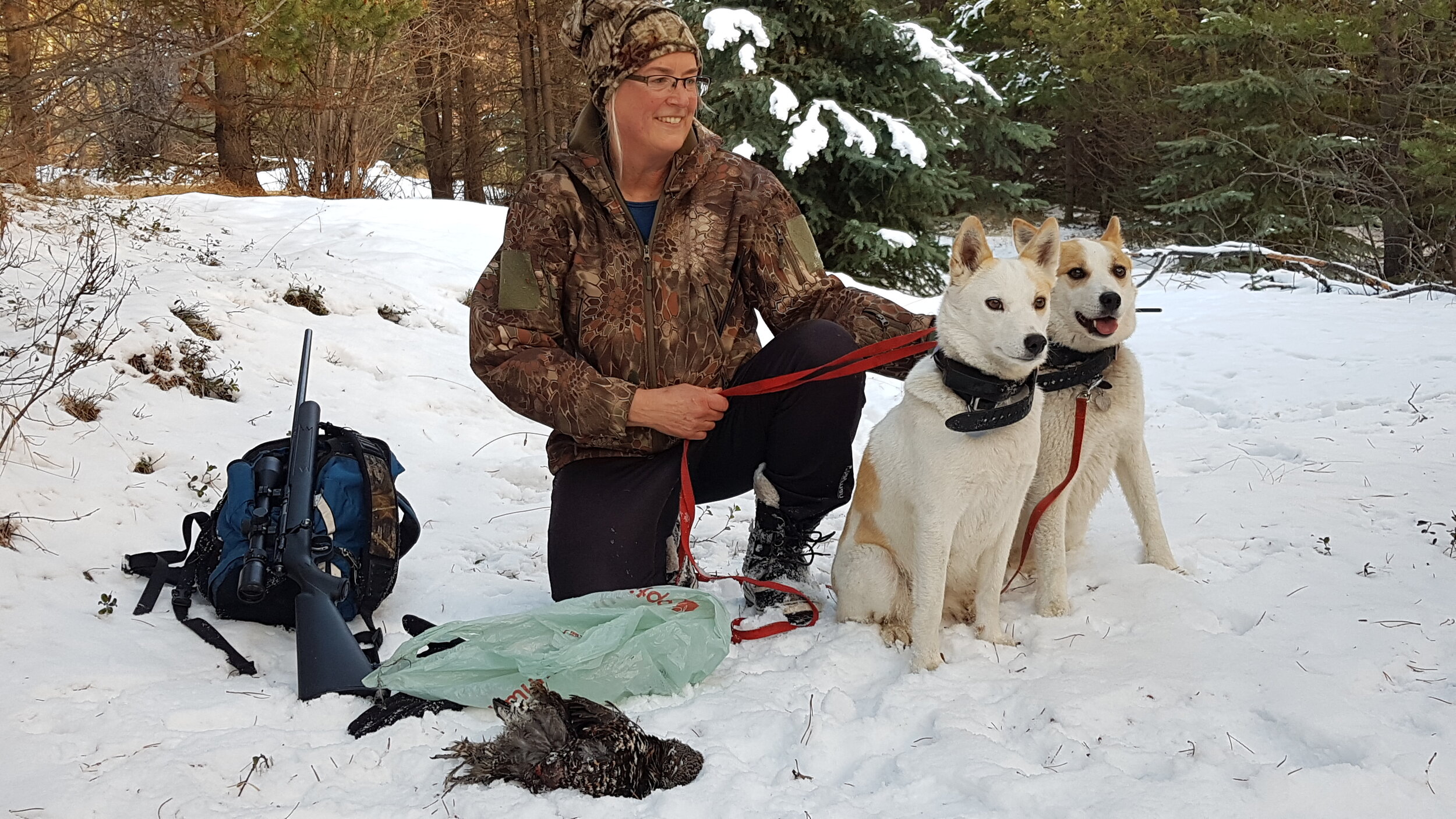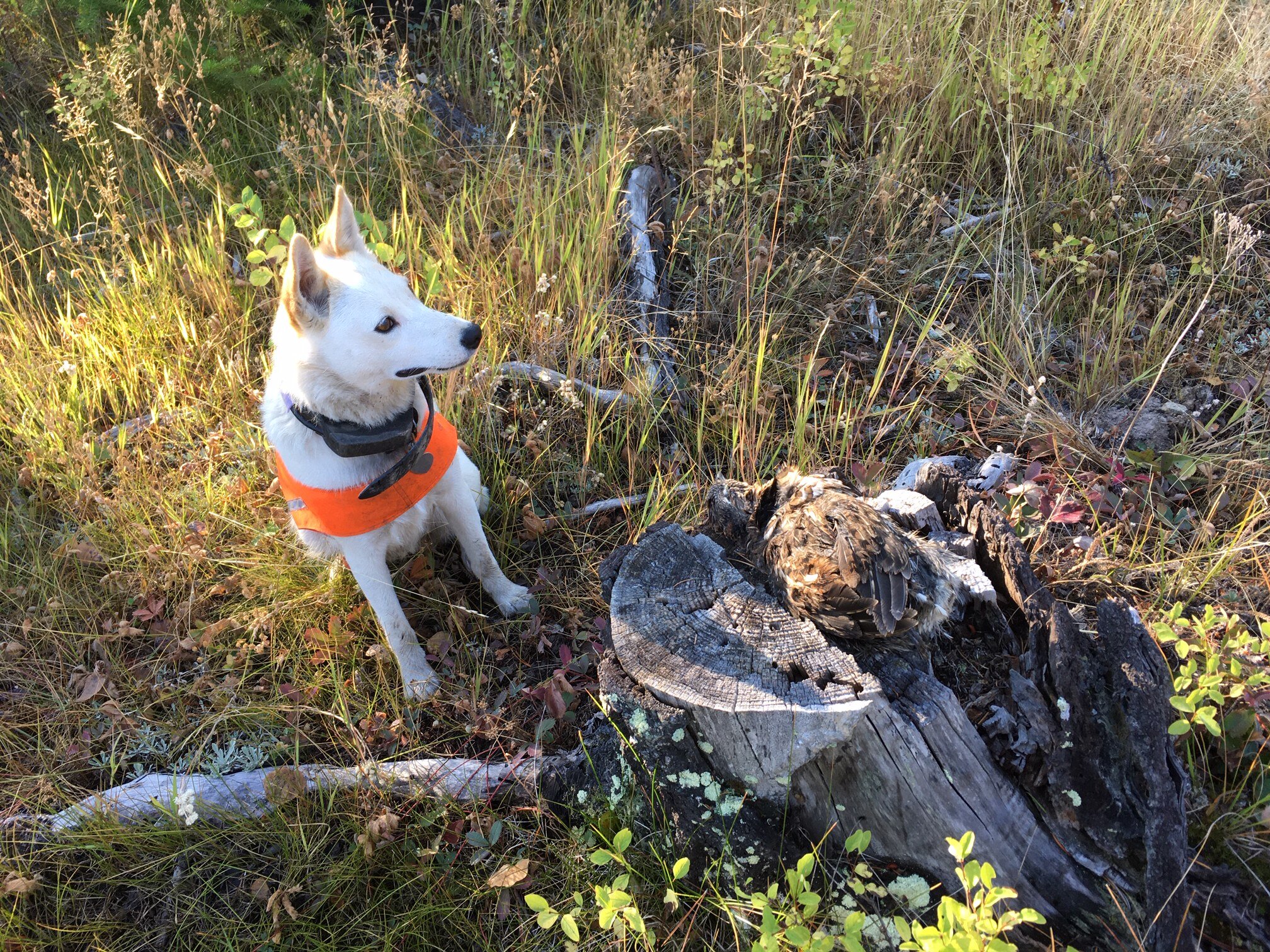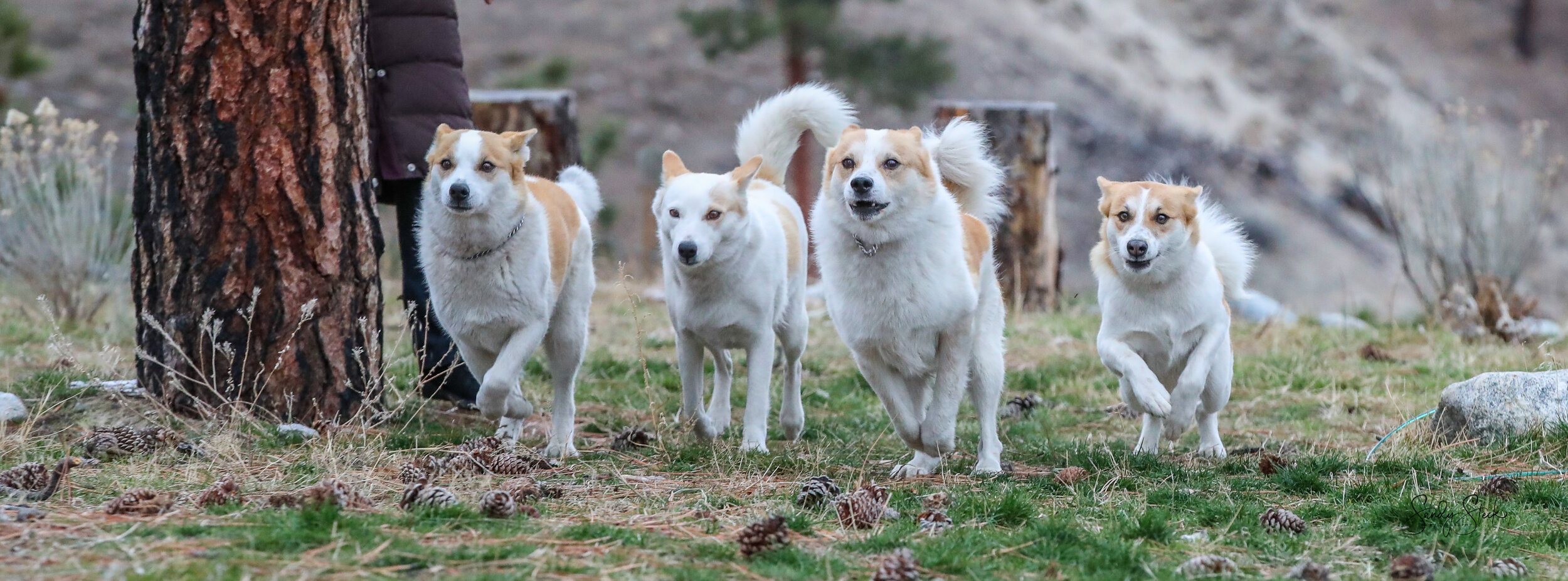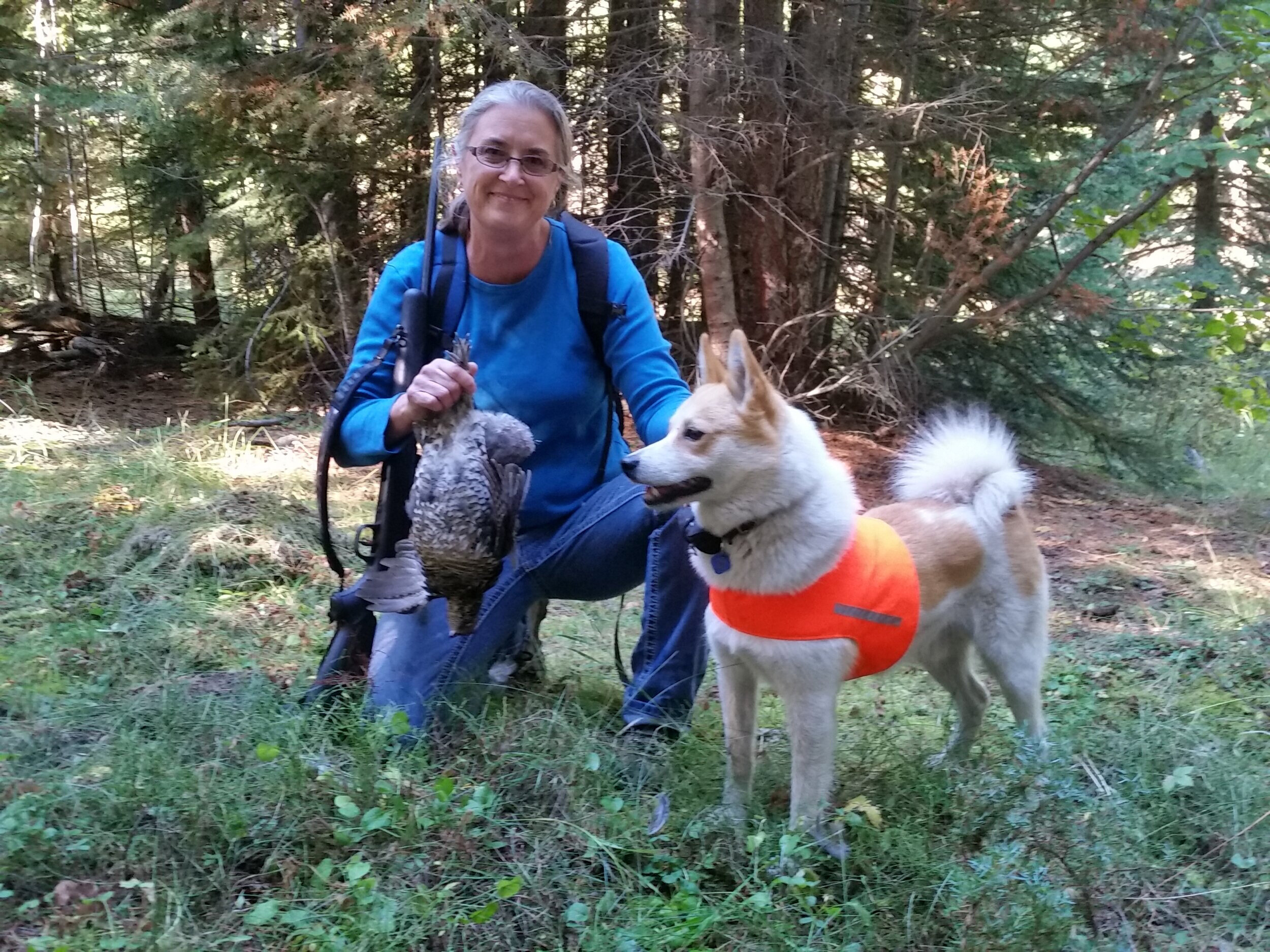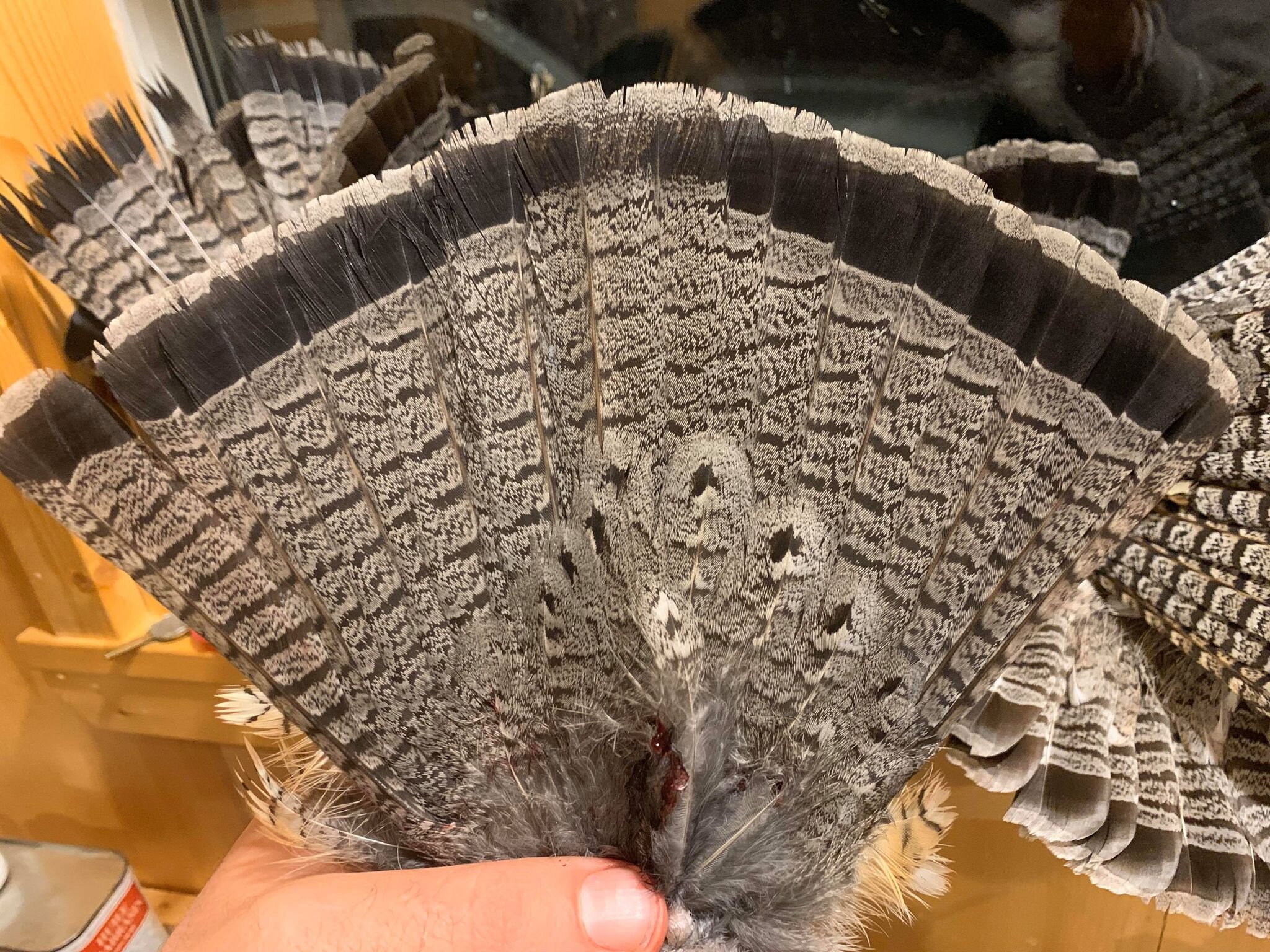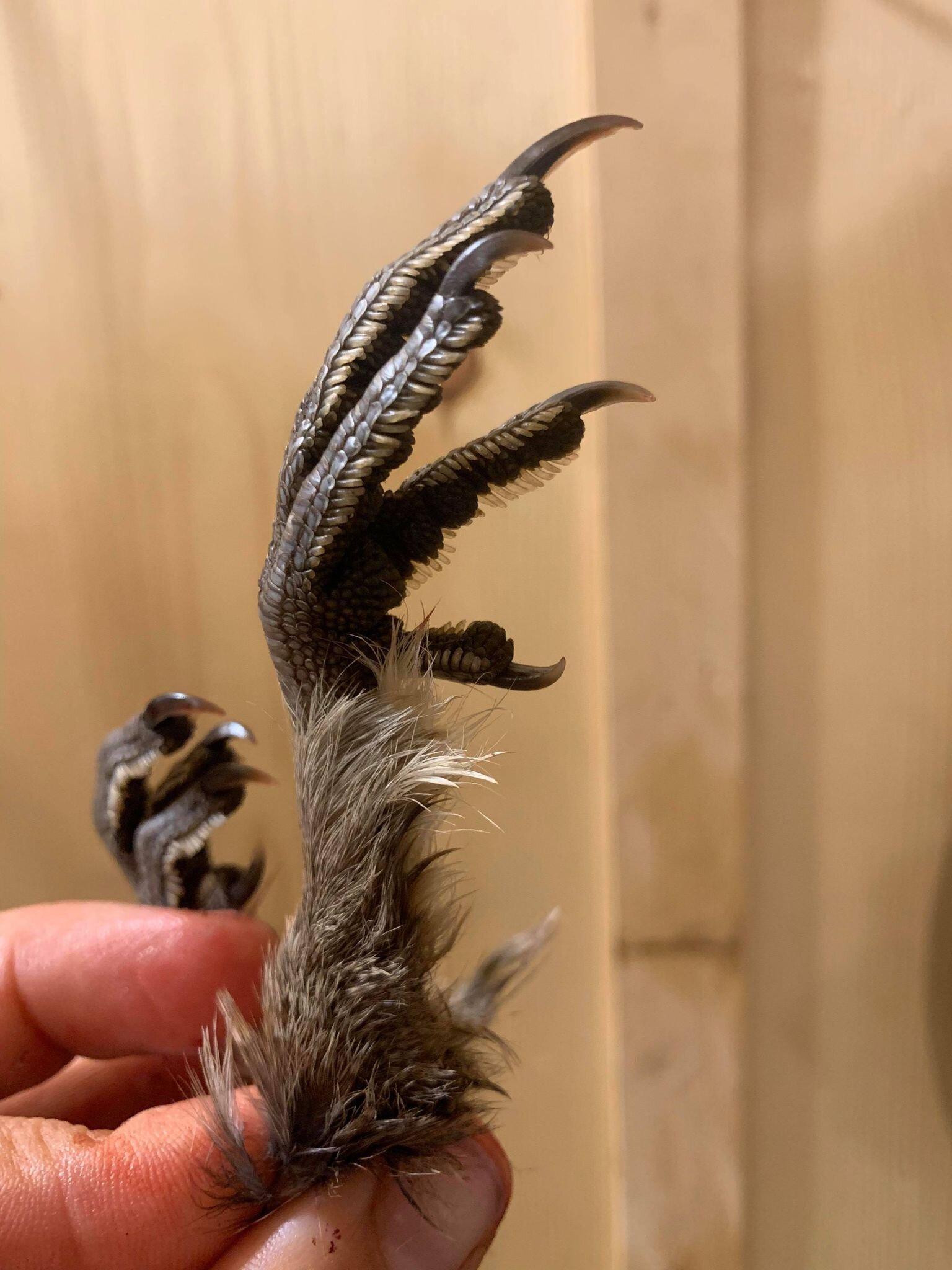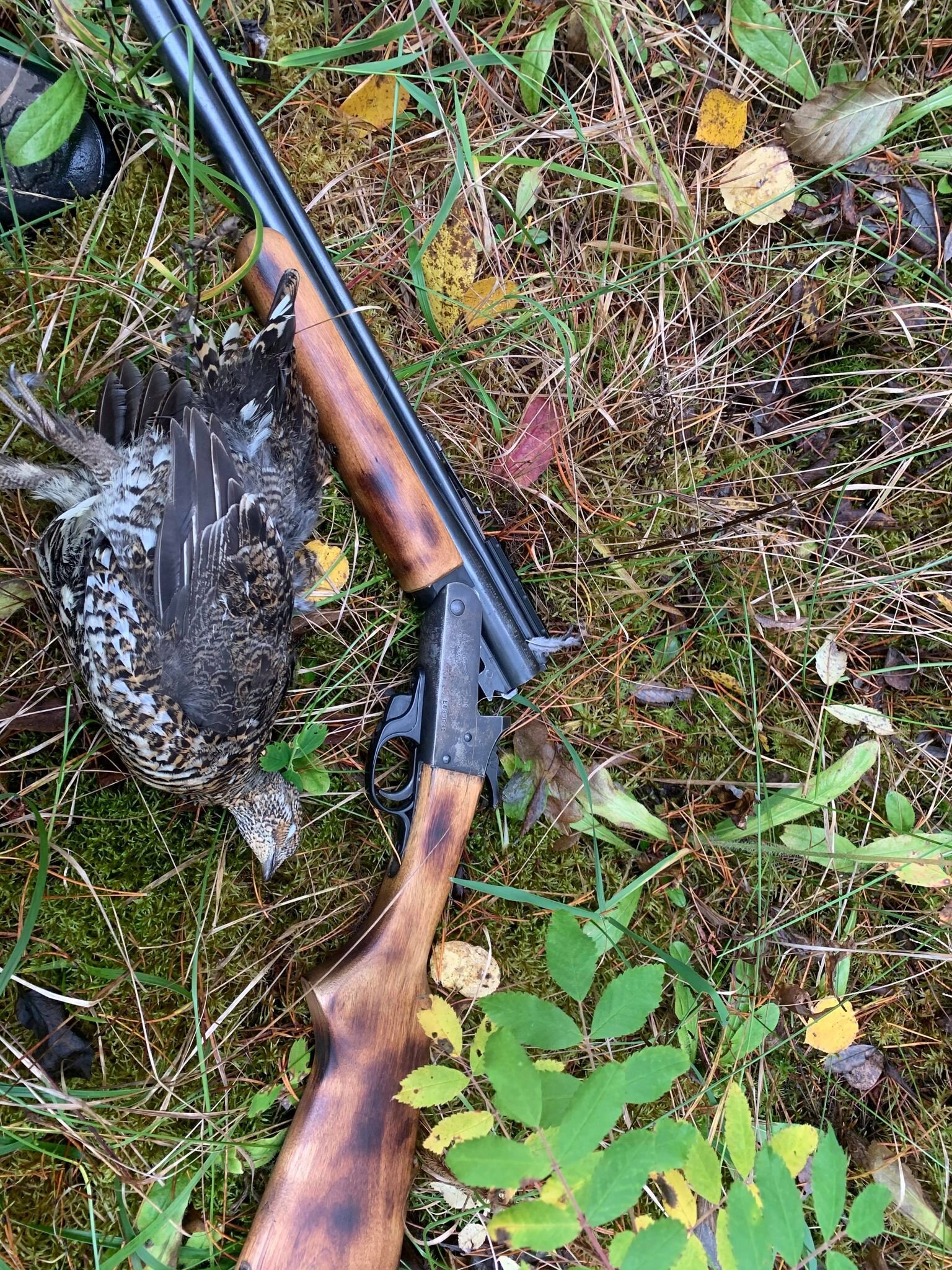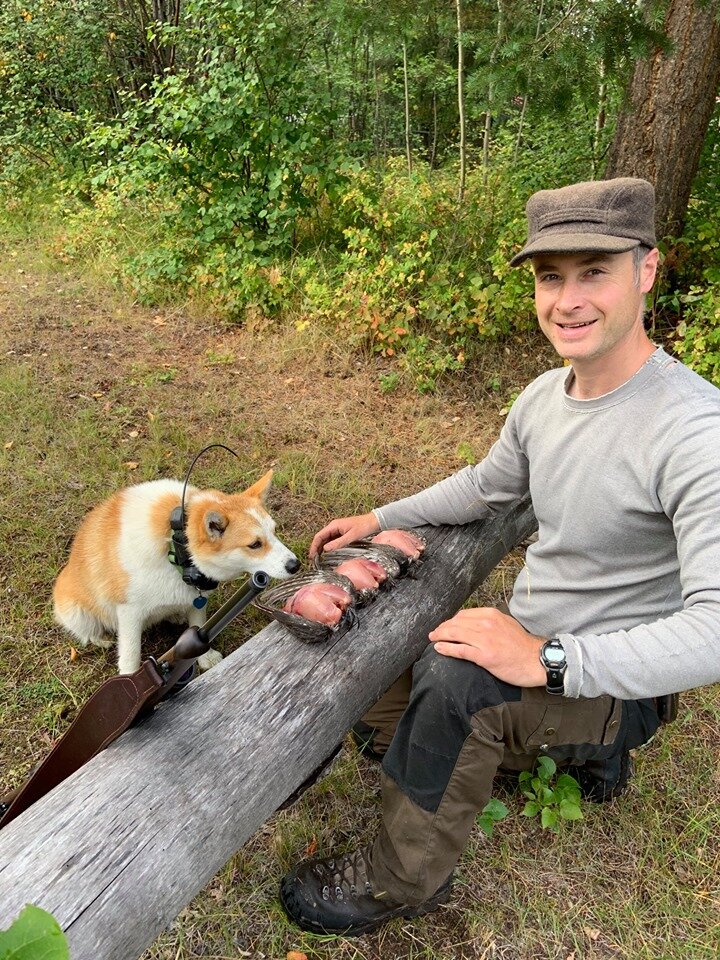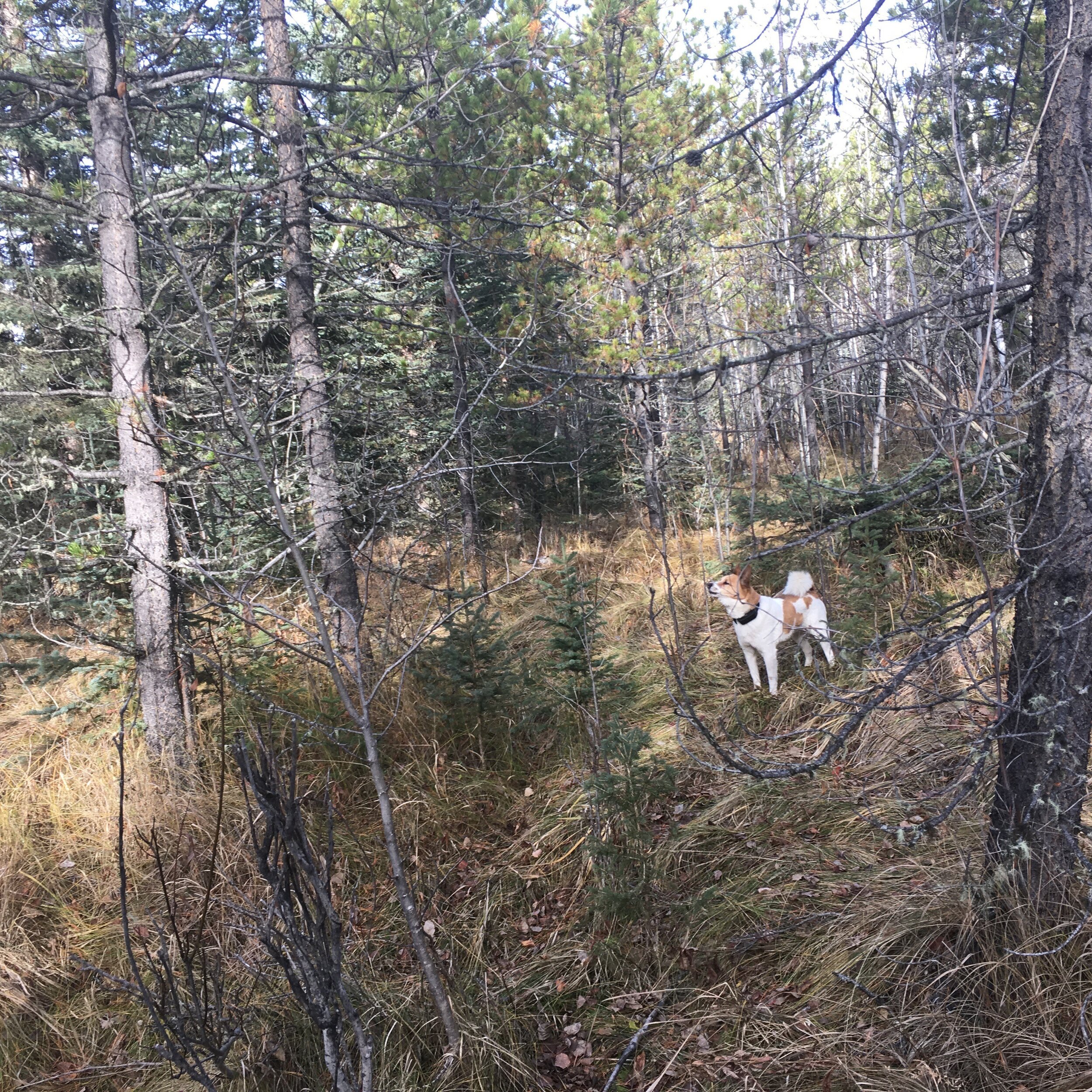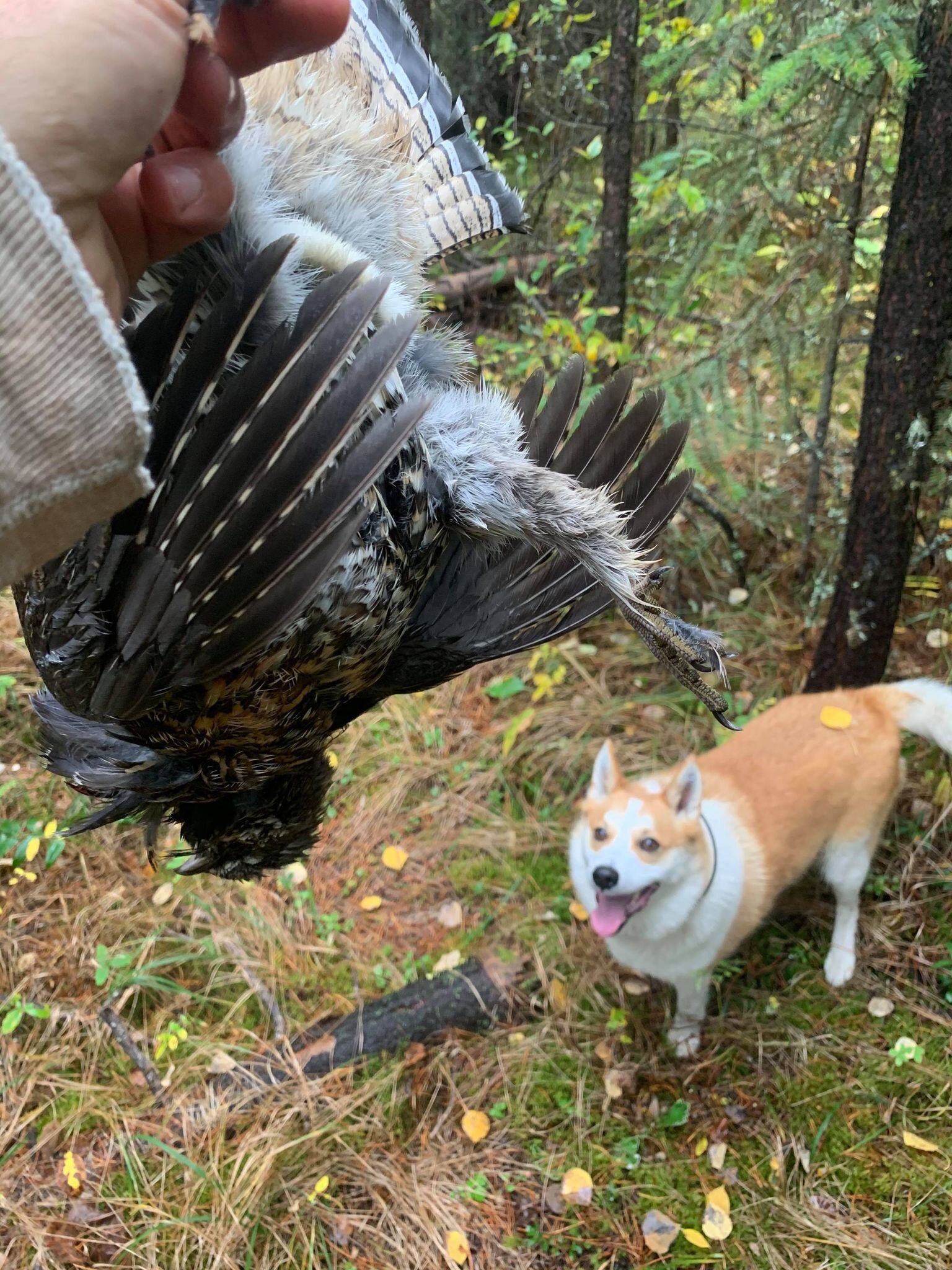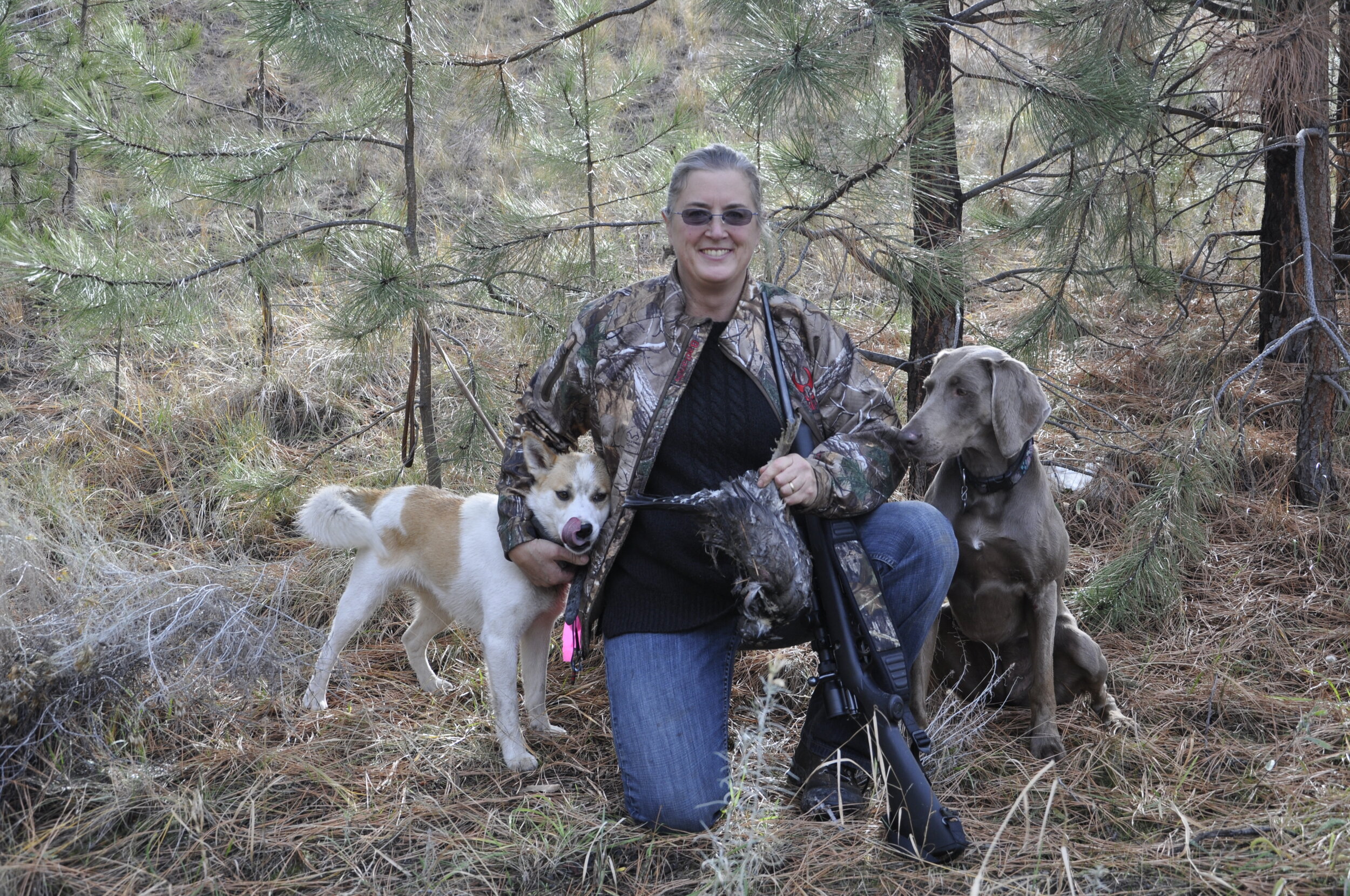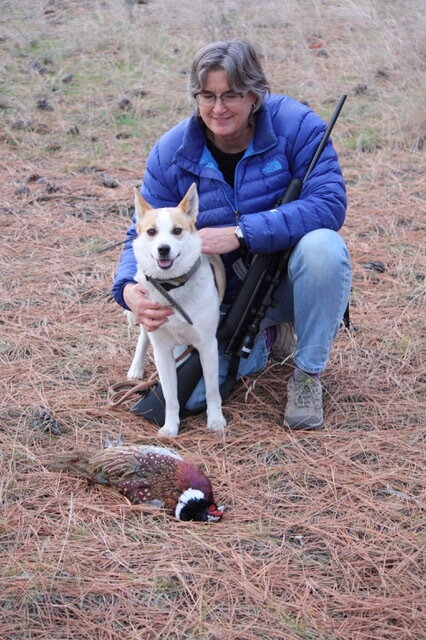Grouse hunting in B.C. - Standskall publication
Bird hunting with Norrbottenspets in North America is not a typical gun dog activity. However, there are a few of us who enjoy this sport with our Norrbottens. I live in British Columbia, Canada. Every fall, for the last 10 years, I have participated grouse hunting with my dogs.
I was not initially interested in the breed as a hunting dog. It was their “look” that attracted me. I was raised with Alaskan Malamutes. The similar northern breed personality and the smaller Norbotten size appealed to me. I soon realized, as I was gathering more information about the dogs, that hunting was very much a part of their being and I wanted to be able to offer this experience to my dogs. My journey with this breed started in 2006. The journey has developed my wilderness skills and shown me the Norrbotten’s amazing innate capabilities. The ultimate discovery is that this little Nordic spitz makes a fine grouse hunting dog.
My first dogs came from Finland. My male, Bob, is from Pohjanukon Kennel and my older female, Cinna, is from Vaarunvuoren Kennel. I also have two dogs, from my breedings; they are Savo’s Elan, and Savo’s Ponderosa Woodland Elf (Pondii). Pondii is a Swedish connection as her sire is from Maria Blom’s breeding. His name is Blumchen’s Swich to RNB. I have used all my dogs for hunting. Bob introduced me to the sport; he was a natural and made my beginner’s training easy. Cinna came to me as a young dog with little bird experience. After running her with Bob for a season she picked up on her bird skills and she has been a solid bird dog since. Elan has been in the woods since she was 6 months old; her first treed grouse was at 8 months of age. Pondii is showing good promise. I will focus on her development over spring and summer with bird training and she will be ready to hunt next fall. I am dedicated to keeping the breed’s purpose alive. There is no other substitute to test a dog’s hunting ability than to take them out in the woods and see their performance.
Here in North American the breed’s promotion is through conformation showing and discussion on hunting relates to the breed’s history and temperament description. Those who want to learn about hunting must draw from overseas resources. In 2007, I had the privilege of viewing Norrbottenspetz hunting dogs and their handlers at the champion hunting competition in Pello. That was my field introduction while YouTube videos of hunts in Scandinavia were also helpful. My Search and Rescue dog handler background was helpful when reading my dogs reaction to scent. Over the years, I have managed to develop a style of hunting that works for our terrain and bird species. I would say that here my dogs hunt for grouse as they do in Scandinavia for capercaillie.
There are three types of grouse that we hunt. The Ruffed grouse averages 500-600 grams. They show dappled brown feathers and show a ruff of feathers on the top of their heads. They like interface areas – the border between farm and bush. They eat berries, rosehips, insects, and buds of aspen and birch in the winter. The Spruce grouse is found in dense forest and fir trees. They are the smallest of grouse, 500 grams, and have dark brown feathers with white spots with a red eye comb. The largest grouse is the Blue Grouse; average weight is 1.2 kg, rich dark brown feathers, and yellow eye comb. They love steep slopes, dense cover, and lots and lots of deadfall. Both the Spruce and Blue grouse have similar diets consisting of berries, seeds, rosehips, insects, and fungi in the summer and mainly conifer needles in the winter. I find Ruffed Grouse and Blue Grouse in my hunting area.
When hunting grouse, I rely on the refind, or the “tree”, for the shot because I am seldom there for the flush. My dogs range between 100 and 200 meters, during which time they are searching for ground and air scent left by the grouse. The birds will forage on the ground or will lie in dense brush areas, or sleep buried in the snow, leaving a scent trail. When my dogs pick up this scent, they work the scent cone to locate the bird, and when the dogs close in, the grouse will flush from its hiding spot or foraging area. Grouse can flush and fly to a nearby tree or they can fly to a tree over 100 m away. I don’t often see, or hear, the flush because my dogs are working out of sight. They do have a distinct search drive which tells me they are on a bird. At this time, they are searching with purpose, they are “on a grouse”. It is exciting to hear a flush, and even more exciting to hear and see a flush. When I hear a flush, I have an absolute there is a bird in the area; when I see a flush, I have a bird’s direction of travel which narrows the search area. This allows me to hunt for the bird with my dogs. The dogs are scenting air and ground for clues while I am scanning tree branches. Grouse will naturally tree for safety and this refind is what allows me to take the shot. It’s an exciting time – but good dogs and a lot of luck are needed for this sport.
Tell tale that my dogs have treed a grouse is their distinctive bark. This breed has a language of barks and at first, I was fooled when my dogs treed a squirrel and I walked in on every bark. In time I learned the difference between a squirrel bark and grouse bark. Squirrels timber – run from tree to tree, and my dogs follow the squirrel and their bark travels with it. A moving bark, repetition, silence, then repetition is always a squirrel. Grouse sit in a tree and do not move. When the bark is repetitious, and stays in one spot, I know I have a bird treed. I will never forget Elan at 8 mos. with her first grouse. Her bark was clear, consistent, and rhythmical, without travel. It was a very proud moment for me. Learning to distinguish bark styles saved a lot of hikes in to my dogs, and disappointment. Now, if they are on a squirrel, I call them off to redirect them back to the search.
How long my dogs can hold a bark is a factor of success. The terrain and the dog’s distance from me determine how long it will take me to reach them. Our terrain is usually hilly with deep gulches and steep embankments. Deadfall areas are frequent and can be quite large. Vegetation can be varied; between dispersed fir and Ponderosa trees to dense undergrowth and high density trees. The bottom of gulches and ravines are the best grouse areas because of the vegetation and water; but they are the worst to navigate. These areas are dense with rose hip bushes, and thickets of deciduous bush, aspen and birch -all food sources for grouse and the attraction for them. Given these factors I may need my dogs to hold a bark for as long as 30 min because of the difficult terrain and distance to navigate.
Another factor of success is how long the grouse will sit. In the beginning of hunting season birds will sit for a long time, particularly young inexperienced birds. Windy days cause birds to spook easily. I have had as many as three refinds, with the same bird, on a windy day. Deer hunting season, which falls in the middle of grouse season, makes for scarce birds. The bush traffic during this time rises exponentially and deer hunters will shoot grouse if seen. The increased traffic and threat keeps the birds wary. Blue grouse tend to be more cautious than Ruffed grouse and you must be very quiet walking in on them. There are times when I’m sure my dogs are on a grouse and go in but come out empty handed. The grouse was alerted of my approach and flew off, or would not sit long enough for me to get there. There is a lot of anticipation when I am walking in which could end with a good outcome, or we hunt again.
Over time, I morphed my hunting strategy into one of me following my dogs vs. the traditional North American gun dog hunting style having my dogs following me. I walked old logging roads and trails, with a definite route in mind, but spent more time managing my dogs to stay with me than hunting. Now, I hunt an area, not a path or road. I move with the dogs, and redirect them, at times, to change their direction, and extensively search the area involved. I use gps navigation to find my way around and have tracking collars on the dogs to easily locate them. I started this method of hunting several years ago and it is working out quite well.
This is a short synopsis of all that I have learned about hunting grouse over the last 10 years. There is so much more I could say, but of all the activities I have done with my dogs, hunting is the most enjoyable for me. I do show, and we also participate in rally obedience. I even put a TD (Tracking Dog) title on Bob. However, the one activity that has developed the greatest bond with my dogs has been hunting. The dogs enjoy being outdoors and doing what they love to do. I love to see my dogs working in the field. They run hard. They work hard. They make me a better hunter. They start to get excited when my pack and rifle are put on the table. They sing to me as we drive to the hunting area in my truck. They share my anticipation of the hunt. We are both working towards the same end result and even though we can’t communicate in the conventional sense, there is a real understanding that develops. I am sure this is very much the same bond that develops between Swedish hunters and their dogs
